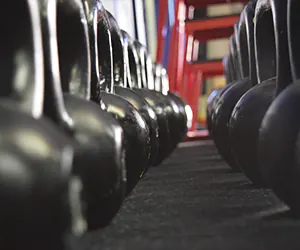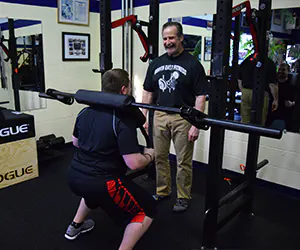Strength Training in Newtown Square, PA
Progressive Resistance - and Why You Need It
 Progressive resistance training is a method of strength training that involves gradually increasing the stress to promote adaptation. This form of exercise has participants using their muscles against a resistance that gradually increases as their strength increases.
Progressive resistance training is a method of strength training that involves gradually increasing the stress to promote adaptation. This form of exercise has participants using their muscles against a resistance that gradually increases as their strength increases.
-
How to Progress
Something must change as your muscles adjust to the weight you lift. This could be how much weight you lift or how many times you lift the weight.
-
Muscle Confusion
In essence, the theory behind "confusing" the muscles during a workout is that, even if people are lifting the same amount of weight, confused muscles exposed to varying exercises become bigger and stronger than complacent muscles cycling through the same routines.
-
Better Range of Motion
A joint can move in all the planes and directions that are allowed for that joint if it has a good range of motion. A complete range of motion will lead to improved joint stability, muscular balance, correct activation of the working muscles, and improved movement quality overall.
Importance of Intensity Training
Your workout intensity can determine whether you make significant or insignificant progress. Additionally, it may affect the likelihood that you will sustain an injury. The adage "the greater the risk, the greater the reward" should be avoided. While greater intensity can produce amazing results, at any fitness level, over-intensifying an exercise program can do harm.
Increased intensity during a workout, whether it be aerobic training or anaerobic exercise, improves insulin sensitivity, raises lactate threshold, and does a lot more. Athletic performance will improve and weight loss could be more effective.

Training Through an Injury
If you exercise hard and lead an active lifestyle for a long enough period of time, it's likely you'll run into some sort of injury eventually. Always begin your training session with a dynamic warm-up since preventing injuries is always preferable to treating them after they occur. A quick warm-up before your activity has been demonstrated in studies to help prevent injuries. But perhaps you've already got a bothersome injury from years ago that makes it difficult for you to workout the way you'd like to. Allowing yourself to recover right now is the most crucial thing you can do. However, there may be a number of methods to stay active while healing depending on your injury. Try reducing the amount of weight you’re lifting while you’re healing. You could also do less reps or change what exercises you’re training. If your shoulder is hurt, focus on lower body training, or maybe cardio.
Core Training and the New You
The importance of core strength cannot be overstated. Training your core will have benefits for the rest of your training and even improve your day-to-day life. Core stability affects your whole body. A strong core can help prevent injuries to the spine and to transfer force between the upper and lower body. Among the benefits of having a strong core are:
- Improved posture
- Improved balance and stability
- Injury prevention
- Reduces back pain
- Improved lifting efficiency
- Improved athletic performance
Having a strong core is the basis of your strength for the rest of your body. Core strength is crucial for properly performing most strength exercises.
About Mike Get My QuoteRecooperation: Physical Therapy in Training
Tiny tears form in the muscles as a result of exercise, especially vigorous exercise. Muscles gradually get bigger and stronger as they mend over time. It's critical to keep in mind that this process happens during rest and recuperation, not the actual workout session.
Proper Nutrition
Fruits and vegetables, whole grains, fish, lean meat, skinless poultry, peas and beans, as well as healthy fats like avocado, nuts, and seeds, are some examples of foods that are high in nutrients. Try to eat as many of these items as you can because nutrition aids in the healing of illnesses and injuries.
Myo-Fascial Release
The process that takes place during a massage is simply known as myofascial release. Myofascial release helps to loosen up tight muscles. By removing obstructions (knots) and hills (tension), the blood flow to painful places increases, enabling the body to heal as it should.
Rest
For muscles to grow, you must rest. Your muscles experience small rips after exercise. However, fibroblast-type cells mend it while you're sleeping. This promotes tissue growth and healing, which builds
Contact NEF today to schedule your first appointment or set up your free consultation to see everything that NEF has to offer. Make the decision to be a better you by this time next year. Together, we can make that dream a reality!
Testimonials Free Training Session